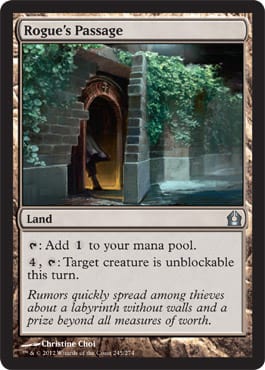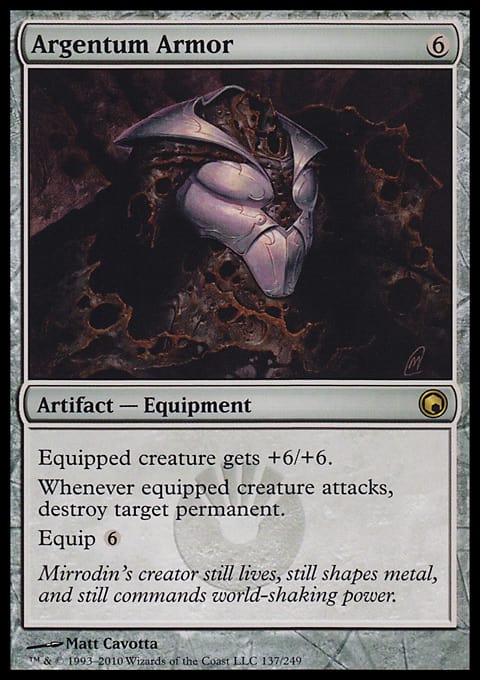In my last article, I explored what a big-mana Sasaya, Orochi Ascendant deck might look like as part of an ongoing experiment with decks that win via overwhelming mana advantage. That deck is an absolute blast to play, and it has me really excited to keep exploring what green can do besides ramp into Avenger of Zendikar.
This week, I spent some time sorting through my collection and ran across some decks from way back when I first started playing. In that pile of copies of Vizzerdrix, Hand of Death, and Scaled Wurm was a small treasure from ten years ago, and that nostalgic blast-from-the-past has given me a new idea about how to approach green—and it’s one that I’m excited to share.
When I first started “playing” Magic, we didn’t really know how the game worked. Consequently, we played something that sort of resembled Magic in that we used the cards, but it had very little to do with the actual game. If I recall correctly, we’d play any number of lands per turn and redraw to seven on every end step. It’s obviously degenerate in retrospect, but it wasn’t too busted when your best cards are Sea Serpents and Goblin Chariots. It wasn’t correct or balanced, but we were excited about jamming our creatures into each other and seeing who could build the biggest monster.
That all changed when Colin showed up. Colin was a classmate who’d shown interest in our afterschool games. We’d lent him decks and taught him the “rules,” and after playing a few games, he’d picked up some packs and built his own deck. Everything changed when Colin sat down for his first game with his new deck. He won his first game. He won his second, third, and every game after that for quite a while. You see, Colin had opened a card that broke our format.

Molimo, Maro-Sorcerer by Mark Zug
Colin didn’t own many cards, so his deck was mostly lands. Because of that, his Molimo, Maro-Sorcerer and Ghitu Fire were incredibly overpowered. Losing to those two cards was the reason that we started playing removal spells and countermagic instead of enormous monsters. Those cards were the primary motivation for our little group learning how Magic actually worked.
Colin outgrew the game not too long after he started. We still hung out, but it was mostly for movies and video games instead of Magic. That said, when we were graduating middle school, Colin left a card in my yearbook: the very Molimo that started it all. I treasured that card for many years, but my collection was broken up when I was deciding what did and didn’t need to come to college with me. Now that I’ve stumbled across it again, I’m ready to see if Molimo is as good in 2014 as he was in 2004.
To start with, let’s talk about what kind of green deck we’re making. There’re generally two types, defined by the functionality of their commanders. Commanders like Sasaya, Orochi Ascendant or Azusa, Lost but Seeking help you power out absurd threats by facilitating the ramp aspect of your green deck. These decks are super-powerful when everything plays out exactly right, and they can easily be among the most degenerate decks in the format. The problem is that these decks run the risk of drawing too much mana and not having anything to do with it.

Azusa, Lost but Seeking by Todd Lockwood
The second type of deck is one in which the commander is the payoff. Molimo and Verdeloth the Ancient are great examples of payoff commanders. These decks are less brutally powerful because your ramp is less explosive and consistent. The difference is that you always have something to do with that mana, and you can always apply pressure to the rest of the table. It’s a tradeoff, and the choice completely depends on the kind of experience you’re hoping to create.
In this case, my plan is to go as big as possible with Molimo beatdown, and if that’s the plan, there’re really only three things I want in my deck. First, I want a critical mass of lands and ramp spells to keep Molimo castable and enormous after multiple removal spells. Second, I want card-draw to keep lands and ramp spells flowing throughout the game. Last, I want some number of powerful interactive elements to prevent people from dealing with the Molimo beats. With that in mind, let’s take a look at where I’m starting with this list:
Molimo Beatdown ? Commander | Carlos Gutierrez
- Commander (0)
- Lands (46)
- 1 Thawing Glaciers
- 1 Deserted Temple
- 1 Scrying Sheets
- 1 vesuva
- 1 Thespian's Stage
- 1 Hall of the Bandit Lord
- 1 Yavimaya Hollow
- 1 Oran-Rief, the Vastwood
- 1 Llanowar Reborn
- 1 Terrain Generator
- 1 Cathedral of War
- 1 Rogue's Passage
- 1 Buried Ruin
- 1 Okina, Temple to the Grandfathers
- 1 Phyrexia's Core
- 31 Snow-Covered Forest
- Ramp (19)
- 1 Druidic Satchel
- 1 Nature's Lore
- 1 Sylvan Scrying
- 1 Expedition Map
- 1 Journey of Discovery
- 1 Ranger's Path
- 1 Explosive Vegetation
- 1 Skyshroud Claim
- 1 Kodama's Reach
- 1 Cultivate
- 1 Peregrination
- 1 Hunting Wilds
- 1 Rampant Growth
- 1 Search for Tomorrow
- 1 Sakura-Tribe Elder
- 1 Explore
- 1 Burnished Hart
- 1 Solemn Simulacrum
- 1 Wayfarer's Bauble
- Card Advantage (11)
- 1 Seer's Sundial
- 1 Trading Post
- 1 Greater Good
- 1 Sylvan Library
- 1 Soul's Majesty
- 1 Garruk, Primal Hunter
- 1 Momentous Fall
- 1 Harmonize
- 1 Eternal Witness
- 1 Restock
- 1 Nostalgic Dreams
- Utility (10)
- 1 Beast Within
- 1 Desert Twister
- 1 Ulvenwald Tracker
- 1 Predator, Flagship
- 1 Acidic Slime
- 1 Howl of the Night Pack
- 1 Woodfall Primus
- 1 Hunter's Prowess
- 1 Karn Liberated
- 1 Spine of Ish Sah
There’s not a ton to say about the deck’s plan. Ramp up, cast fatties, beat face. The ramp package is pretty standard, as are some of the card-advantage engines and utility spells. That said, there’s some space for flexible, interesting cards that I haven’t had many opportunities to play with and am excited to try. Let’s take a minute to consider some of the more interesting utility cards in this list.
Diviner's Wand is a card I’ve championed in Voltron decks for a while now. Particularly in nonblue decks, the evasion with card advantage is stellar, and this deck is especially well-positioned to abuse this card because of the amount of mana you can dump into it. How many cards can function as a mana sink and as a card-advantage engine while also setting up the aggro plan?
My next pick, Rogue's Passage, is a card I have never used in Commander before, and I generally haven’t been impressed by it across the table. This deck is different. Mana is no object, and we’re on the one-shot plan when the game goes long. Fire up the Hall of the Bandit Lord, and get in for 21 points of hasty commander damage. Sounds good to me!
Disciple of Bolas is among my favorite cards in Commander these days. Unfortunately, it’s not a green card. Fortunately, we have a ton of cards that do basically the same thing. Cards like Momentous Fall and Life's Legacy from Magic 2015 can consistently draw ten or more cards, and it can do a great job of teaming up with Garruk, Primal Hunter and Greater Good to keep us flush with cards to spend our mana on.
Ulvenwald Tracker may be the card I’m most excited about. Green doesn’t have a plethora of ways to consistently interact with the board besides casting creatures with enters-the-battlefield abilities. It has even fewer ways of interacting at instant speed. Unless your opponents have some epically enormous creatures that are capable of brawling with Molimo, you’re going to gain some serious value out of this 1-drop. Predator, Flagship is similarly powerful, but it has the bonus of granting evasion as well, which is spectacular for Molimo.
Last, Argentum Armor is a card I’ve tried in a lot of decks and have been very disappointed by. You have to spend so much mana or cards trying to set up hits with this, and it’s not even that absurd when you get it going. Things are different in this deck. The mana isn’t that big of a deal, and green is short on ways to interact with permanents besides smashing creatures into them. Is this finally the deck for Argentum Armor? I certainly hope so.
I haven’t been able to play many games with Molimo or Sasaya just yet, but I’m excited to try both and see what sticks. The Sasaya deck has the degenerate games that I was really looking for from my green deck, but this Molimo build has all kinds of nostalgia attached to it, and sometimes, a little nostalgia goes a really long way. The decks are shockingly similar, so I’m sure I’ll be swapping back and forth between the two for a couple months to see what feels better, but it’s exciting to have found two decks that bring a new color and flavor to my Commander arsenal.
Until next time, here are a few things I have rattling around in the back of my head:
Whispers of the Muse
- Pharika, God of Affliction makes you jump through a ton of hoops, but Pygmy Kavu and Reap may be worth it.
- Besides being a super ritual in Sasaya decks, Surveyor's Scope with fetch lands may secretly be among the best nongreen ramp spells in the format.
- Melek, Izzet Paragon. Cantrips. Leering Emblem. Diviner's Wand. Izzet Blitz in Commander?
























